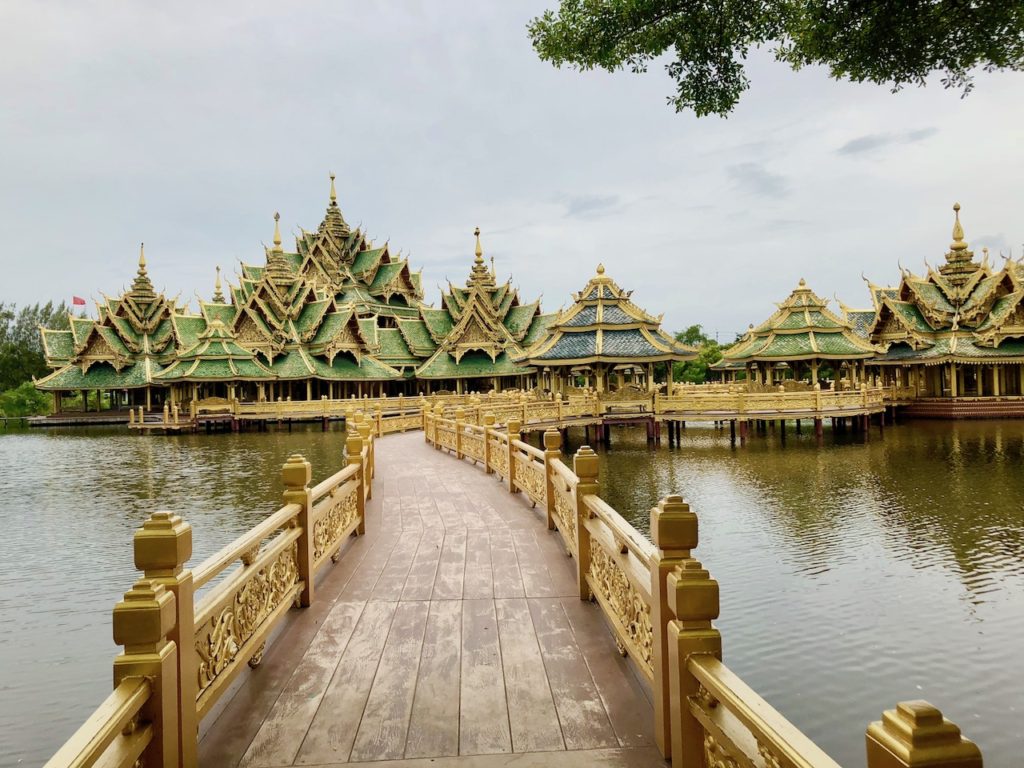From Rice Paddies to Golden Temples: Ancient Thailand Revealed- Long before the bustling streets of modern Bangkok, ancient Thailand—historically known as Siam—thrived as a civilization where the sacred and the everyday intertwined seamlessly. Life in these early kingdoms was a tapestry woven from rice paddies, temple bells, village chatter, and ritual devotion. It was a society deeply connected to the land, yet open to the currents of ideas, trade, and art flowing from India, China, and the Khmer Empire.
At the heart of ancient Thai life was spirituality. Buddhism, introduced centuries earlier, had by the 13th century become the dominant guiding force. Monks in saffron robes were more than religious leaders; they were educators, moral guides, and pillars of village life. Their chants and teachings structured the day, and children learned ethics and philosophy alongside basic literacy. Hindu myths and rituals were also present, especially in royal ceremonies and temple decorations, blending gracefully with local animist beliefs. From river spirits to forest guardians, the divine was felt in every corner of daily life.
Yet, the soul of ancient Thailand was not confined to temples. Rice paddies dictated the rhythm of existence. Villages were built near fertile river plains, where cooperative farming bound communities together. Planting, tending, and harvesting rice were not only essential for survival but also deeply ritualized. Festivals punctuated the agricultural calendar—water blessings to ensure plentiful rains, harvest celebrations to thank the land. These moments of communal activity reinforced both social cohesion and spiritual observance, making work and worship inseparable.
Art and architecture reflected this spiritual and societal balance. Temples, or wats, were the beating hearts of communities, adorned with golden spires, intricate carvings, and vibrant murals. These were not mere decorative flourishes; they narrated epic stories from the Buddha’s past lives, Hindu deities, and local legends. Sculpture, pottery, and jewelry also carried spiritual and cultural significance. Nobles displayed wealth through silk garments, golden ornaments, and bronze statues, while commoners created functional yet symbolic items from clay, wood, and natural fibers. Every creation—from a carved doorway to a woven textile—was a message, a blessing, or a story.
Language and literature served as both record and art form. The Thai language evolved to suit administration, poetry, and religious teachings. The Jataka tales, recounting the Buddha’s former lives, were widely known and performed orally with music, dance, and dramatization. Storytelling was immersive, connecting generations and ensuring that moral and cultural lessons were passed down naturally, through engagement and entertainment rather than rote instruction.
Clothing and personal adornment further expressed identity and belief. Simple cotton and hemp suited farmers’ daily labor, while nobles wore silk, embroidered patterns, and gold jewelry. Tattoos, amulets, and headpieces often carried spiritual significance, believed to protect the wearer or invite fortune. Even in the simplest acts—plowing a field, lighting incense, or weaving a basket—daily life was touched by ritual and meaning.
Festivals and performance art were vibrant expressions of this culture. Music, dance, and theater intertwined with religion and agriculture. Classical Thai dance, with precise hand gestures and elaborate costumes, originated in this era, narrating divine tales, heroic deeds, and local folklore. Festivals created spaces for celebration, reflection, and social bonding, turning villages into living stages where culture was performed, shared, and preserved.
What stands out most about ancient Thailand is its adaptability and synthesis. While it absorbed Indian, Chinese, and Khmer influences, it did so in a way that enhanced, rather than diluted, a distinct Thai identity. Spirituality, art, and social structure worked together to create a society that honored both the past and the natural world while remaining dynamic and innovative.
From the muddy rice paddies to the gleaming golden temples, ancient Thailand was a civilization of rhythm, ritual, and resonance. It was a world where labor was sacred, art told stories, and spirituality touched every moment. The legacy of this culture continues today, not only in Thailand’s temples, festivals, and traditional arts but in a mindset that sees life as an intricate weave of human, natural, and divine elements. Ancient Thailand reminds us that a civilization is defined not only by monuments or kings but by the lived experience of its people—their work, their worship, and their stories.
What Makes Families the Real Backbone of Society? – International Day of Families | Maya



